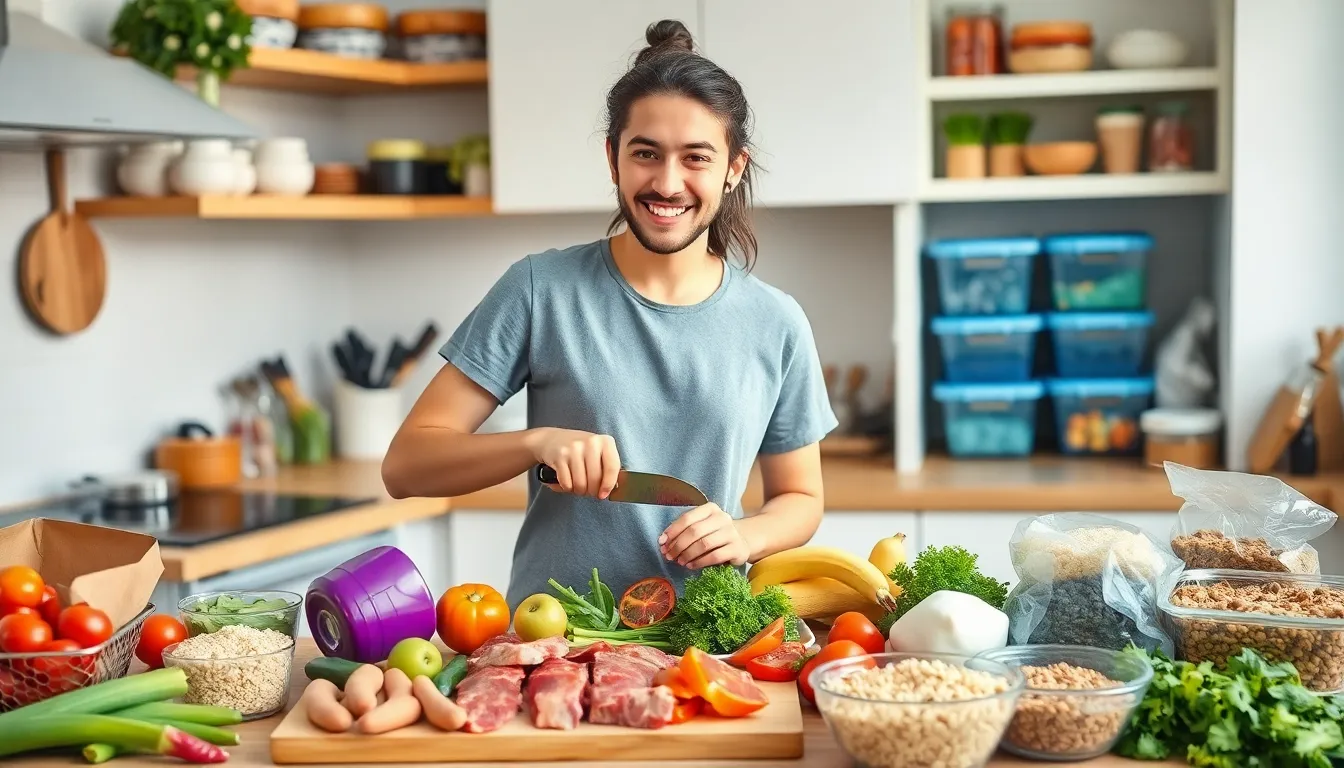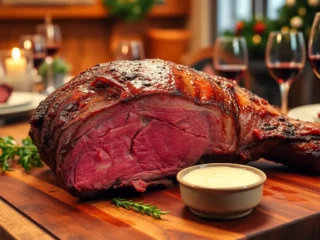
Cooking for one can often feel like a daunting task. With busy schedules and the temptation to grab takeout, many overlook the joys of preparing meals at home. However, it’s not just about saving money; it’s also a chance to explore creativity in the kitchen and enjoy healthier options tailored to personal tastes. Embracing the art of cooking for one opens up a world of culinary possibilities. From simple recipes to meal prepping strategies, individuals can discover how to make the most of their time and ingredients. With a little planning and the right mindset, cooking solo can transform from a chore into a delightful experience.
Cooking for One
Cooking for one offers unique advantages that cater to individual needs and preferences. It can become a cost-effective solution that promotes creativity in the kitchen.Benefits of Cooking for One
-
- Cost Savings: Cooking for one minimizes grocery bills by allowing customized purchases without waste. Single-serving ingredients lead to better financial management.
-
- Healthier Options: Preparing personal meals enables control over ingredients and portion sizes, fostering healthier eating habits. It promotes fresh produce and lean proteins over processed foods.
-
- Culinary Exploration: An individual can experiment with diverse recipes and cuisines, leading to culinary growth. Trying new dishes without the pressure of pleasing others encourages creativity.
-
- Time Efficiency: Cooking for one reduces meal prep and clean-up time, allowing for a more efficient cooking experience. Shorter cooking sessions can fit seamlessly into a busy lifestyle.
Common Challenges Faced
-
- Portion Control: Determining the right portion sizes can lead to leftovers or wasted food. Individuals may struggle to create dishes that suit their appetite.
-
- Lack of Motivation: Cooking for one may feel uninviting, leading to reliance on convenience foods. This lack of enthusiasm can diminish the joy of cooking.
-
- Limited Recipe Variety: Individuals may find it challenging to source recipes tailored for one, limiting meal diversity. A lack of accessible single-serving recipes can hinder creativity.
-
- Food Spoilage: Buying fresh produce often results in spoilage before consumption. This risk discourages purchasing items that promote a balanced diet.
Meal Planning Tips

Creating a Weekly Menu
Creating a weekly menu enhances cooking for one. Start by selecting a variety of recipes that incorporate similar ingredients to minimize waste. Choose three to four main dishes, ensuring they include proteins, vegetables, and grains. Consider preparing one or two versatile ingredients, like grilled chicken or roasted vegetables, that can serve as bases for multiple meals. Use different seasonings or sauces for variety. For instance, grilled chicken can accompany stir-fried veggies one day and a salad the next. Keep it simple but balanced to maintain nutritional needs.Shopping for One
Shopping for one requires efficiency. Make a comprehensive grocery list based on the weekly menu to avoid impulse buys. Focus on fresh produce and proteins, buying only what’s needed for the week. Opt for items with longer shelf lives or those that can be frozen, like frozen vegetables or meats, to extend usability. Choose smaller packaging where available to prevent excess and spoilage. In addition, consider bulk options for staples like rice or beans that can be portioned for later use. Prioritize reusable storage containers to keep leftovers fresh, promoting a sustainable approach to solo cooking.Easy Recipes for Solo Diners
Cooking for one can be straightforward and enjoyable with the right recipes. Below are some easy options tailored for solo diners, allowing for quick preparation and delicious meals.Quick Breakfast Ideas
-
- Overnight Oats: Combine rolled oats, yogurt, and milk in a jar. Add fruits like bananas or berries, along with nuts or seeds. Refrigerate overnight for a nutritious grab-and-go breakfast.
-
- Egg Muffins: Whisk eggs and pour the mixture into a muffin tin. Add veggies like spinach or peppers and cheese if desired. Bake until set for easy breakfast portions.
-
- Smoothie Bowl: Blend frozen fruits with a splash of milk. Pour into a bowl, and top with granola, nuts, and fresh fruit. This offers a refreshing and quick breakfast option.
Simple Lunch Options
-
- Quinoa Salad: Cook quinoa and mix with diced vegetables, chickpeas, and a light vinaigrette. This salad stays fresh in the fridge for a few days and serves as a hearty lunch.
-
- Wraps: Fill a tortilla with deli meat, cheese, lettuce, and hummus or avocado. Roll tightly for a satisfying meal that’s easy to customize.
-
- Soup: Prepare a simple vegetable or chicken soup using broth, fresh vegetables, and protein like chicken or beans. Store in reusable containers for quick heating during the week.
Dinner for One
-
- Stir-Fried Vegetables and Tofu: Sauté a mix of vegetables, such as bell peppers and broccoli, with cubed tofu in soy sauce or teriyaki sauce. Serve over rice or noodles for a quick dinner.
-
- Pasta with Garlic and Olive Oil: Boil pasta and toss it with sautéed garlic in olive oil, adding spinach or cherry tomatoes for color and flavor. Finish with grated cheese for a comforting meal.
-
- Sheet Pan Chicken and Vegetables: Place chicken breast, potatoes, and seasonal vegetables on a sheet pan. Drizzle with olive oil and seasonings. Bake until cooked through for an easy one-pan meal.
Storage and Leftovers
Effective storage and creative use of leftovers significantly enhance the experience of cooking for one. Properly managing leftovers not only reduces waste but also saves time and money.Best Practices for Storing Meals
-
- Use Airtight Containers: Utilize glass or plastic containers with secure lids to keep food fresh longer.
-
- Label and Date: Mark containers with the contents and date to track freshness while ensuring safe consumption.
-
- Store in Portions: Divide meals into individual servings to simplify reheating and reduce temptation to eat more than intended.
-
- Cool Before Storing: Allow foods to cool to room temperature before sealing. This method prevents condensation and spoilage.
-
- Freeze for Longevity: Freeze meals that won’t be consumed within a few days. Most cooked items can last 2-3 months in the freezer.
Creative Ways to Use Leftovers
-
- Transform into New Dishes: Repurpose leftover proteins or grains into salads, wraps, or stir-fries for a fresh meal experience.
-
- Soups and Stews: Combine leftover vegetables, grains, and proteins into soups or stews. Add broth for a warm, comforting option.
-
- Breakfast Add-Ons: Use leftover roasted vegetables in breakfast omelettes or frittatas, enhancing flavor and nutrition.
-
- Smoothie Boosts: Incorporate leftover fruits into smoothies. Freezing fruits can also create refreshing blends.
-
- Snack Innovations: Turn leftovers into dips or spreads, such as blending chickpeas into hummus or using cheese scraps for quick quesadillas.
Kitchen Tools for One
Cooking for one requires a thoughtful selection of kitchen tools that enhance efficiency and simplify meal preparation. The right utensils and appliances streamline the cooking process while promoting innovative techniques.Essential Cooking Utensils
-
- Chef’s Knife
-
- Cutting Board
-
- Mixing Bowls
-
- Measuring Cups and Spoons
-
- Non-Stick Skillet
-
- Spatula
-
- Food Storage Containers
Recommended Appliances
-
- Instant Pot
-
- Air Fryer
-
- Blender
-
- Microwave Oven
-
- Electric Kettle
-
- Toaster Oven
-
- Rice Cooker






